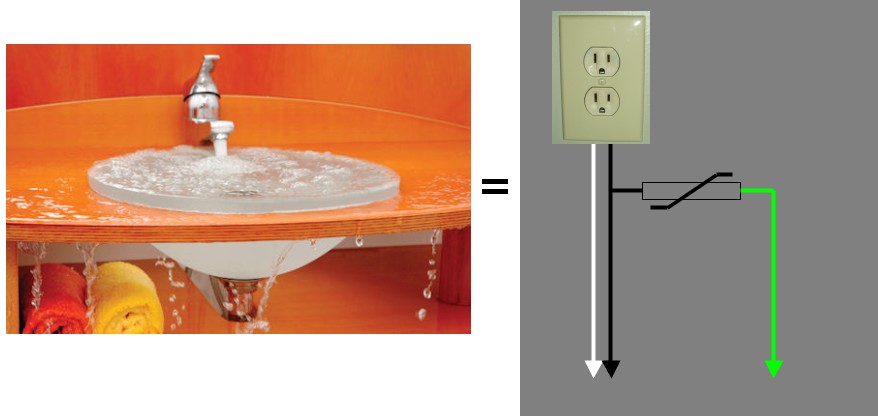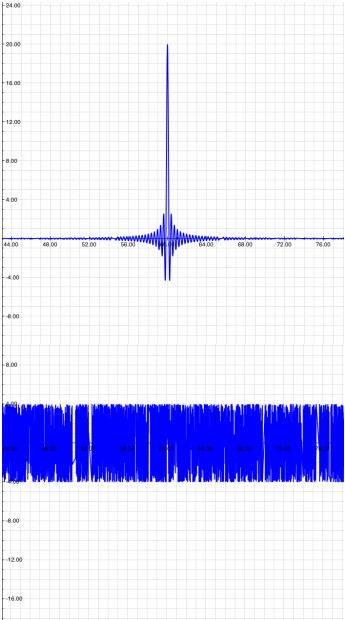Physicist: To control power in a house or an outlet you’d generally use a fuse. But fuses are slow, they need time to heat up. A surge (or the faster “spike”) happen too fast, so reacting to a surge is no good. Dealing with a surge properly has to be built into the nature of the machine. There are two (general) ways to do this: “choking” and “shunting”.
Shunting is what a sink does when it over-flows. You never worry about water getting to the ceiling above your sink, because the moment the water gets as high as the edge the sink starts overflowing and stops filling up. The ceiling is protected by the innate nature of the sink (which doesn’t need to react, it just “does”).

If the water in the sink gets too high it simply falls over the edge. Similarly, if the voltage in the load line gets too high, the resistance of the varistor (variable resistor) drops from very, very high to nearly zero. This allows a connection to ground, and electricity can then flow out of the circut, instead of through it.
The zero-finesse surge protector is just a varistor placed between the power line and the ground line. The ground line (in this metaphor) is the floor around the sink, where all the overflowing water gets dumped.
While there is some fancy quantum mechanics tied up in varistors (I’m talkin’ valence and conduction bands here), what really gets my physics juices jumping is waves and frequencies.
The other type of surge protector is essentially a “band pass filter” centered around 60 hz (the frequency of the current in the electrical grid). You can think of this as the “radio” of the surge protector tuning into the “station” of the wall outlet (and tuning out everything else).
Now, I hope this doesn’t come as a shock to anyone, but most surges (e.g., lightning strikes) are fast. It turns out that because of the Uncertainty Principle, things that happen really fast are necessarily spread out over a lot of frequencies (small time uncertainty means large frequency uncertainty).

The frequency spectrum for a wall socket (top) and a lightning bolt (bottom). Keep in mind that this is not a graph in time, but in frequency. If you played a single note on a piano you'd get something like the top graph, and if you banged on all the keys at once you'd get something like the bottom graph.
So while a power surge may have a lot of energy overall, the amount of energy right around 60 Hz, where it can get into the circuit, should be fairly small. You can build chokes to limit the frequencies that get past the surge protector by using carefully tuned LRC circuits, but generally (since most of the energy is in frequencies much higher than 60 Hz) you can just build a “low pass filter”.
Which is just fancy talk for “an inductor”.
Which is just fancy talk for “a coil of wire“.







I wonder if the type using inductive low pass filter is really as simple as inserting that huge inductor in series with load. Seems like that would constantly waste energy when in use. Less so than a capacitive low pass filter (with a series resistor) I guess.
It would, but I can’t think of any protector systems that don’t siphon at least a little power. But check this out! A typical lightning stroke lasts about 30 microseconds, so the frequency spectrum should become significant around .3×10^6 Hz (guestimation physics). So if you have an inductor with an impedance of 1 Ohm at 60 Hz, it’ll have a resistance of around 2 million Ohms for the lightning bolt.
That being said, you’re right, I’d expect that most systems are at least a little slicker than just a couple loops of wire.